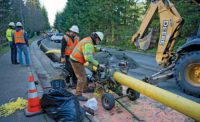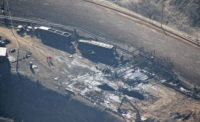Southern California Gas Co.’s Aliso Canyon gas leak, near Porter Ranch, Calif., so far has triggered a special federal task force, new U.S. Environmental Protection Agency gas pipeline and storage emissions rules, and a criminal case.
The leak started in October, when pressure from a massive gas reservoir popped a well casing and unleashed 100,000 metric tons of methane into the Los Angeles area’s skies. Engineers spent almost five months trying to seal the leak. A safety shutoff valve had been removed, and several other engineering safety precautions had been neglected.
“There’s not going to be some regulation that comes in overnight and fixes everything because, right now, it’s not even illegal to leak natural gas,” says Richard Kuprewicz, pipeline safety engineer and president of Redmond, Wash.-based Accufacts Inc. “Aliso Canyon … was a huge amount of gas—$36 billion worth of damage.”
The interagency task force, formed in early April between the Dept. of Transportation’s Pipeline and Hazardous Materials Safety Administration (PHMSA) and the Dept. of Energy, comes with a promise from President Barack Obama to increase oversight of gas storage facilities.
The Environmental Defense Fund, which partnered with Google Earth on a five-year project to map gas leaks, is skeptical. “For too long, we have gone without federal and state standards that require sufficient leak and safety inspections for oil and gas facilities, and industry has shown it can’t be trusted to fix the problem on his own,” the organization said in a statement.
“It’s easy to be critical in hindsight,” Kuprewicz says. “But it is a risk-management standard to have two levels of protection in a well like that. But it had been allowed to go down to one. From an engineering standpoint, that’s pretty bad.”
PHMSA in February called for volunteer inspections of storage wells.
Kuprewicz doesn’t see the point. “It’s obvious we need something more than a volunteer program,” he says.




Post a comment to this article
Report Abusive Comment